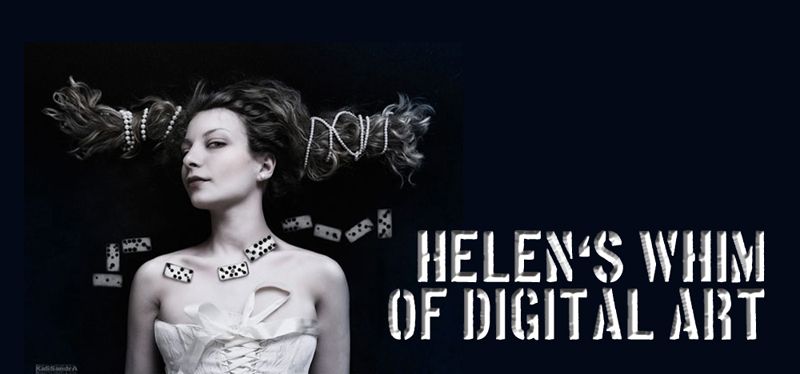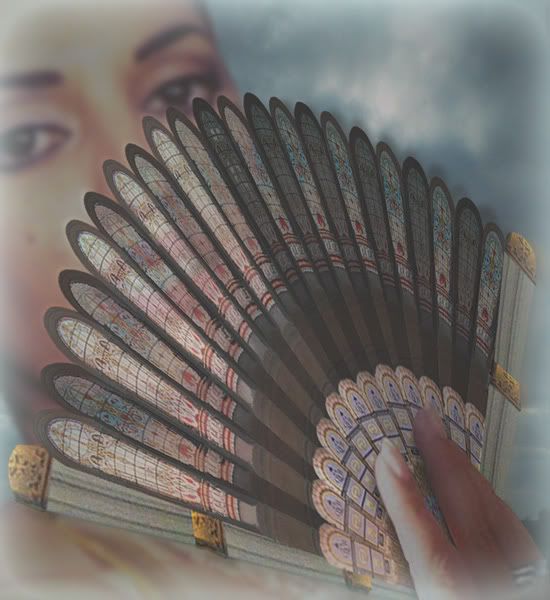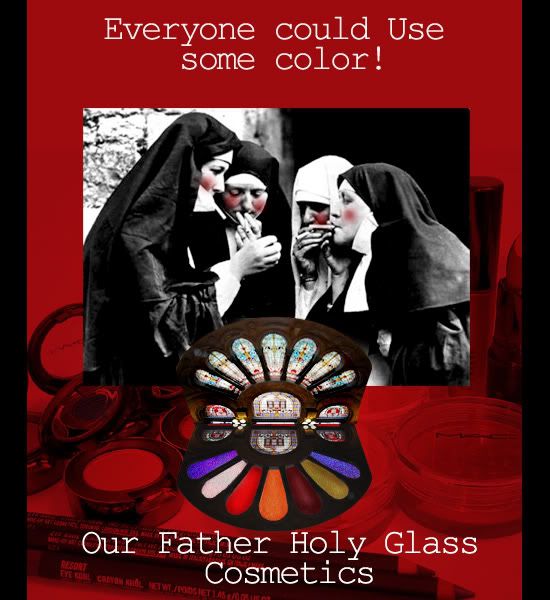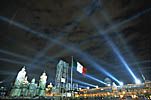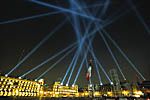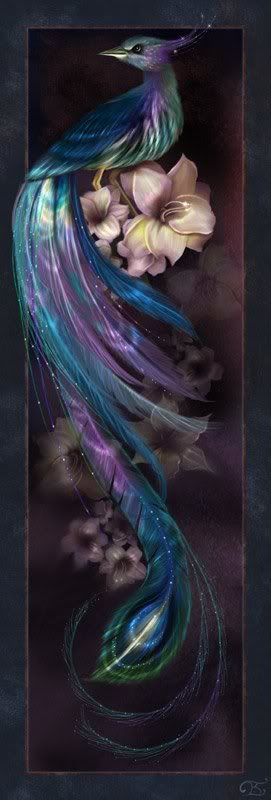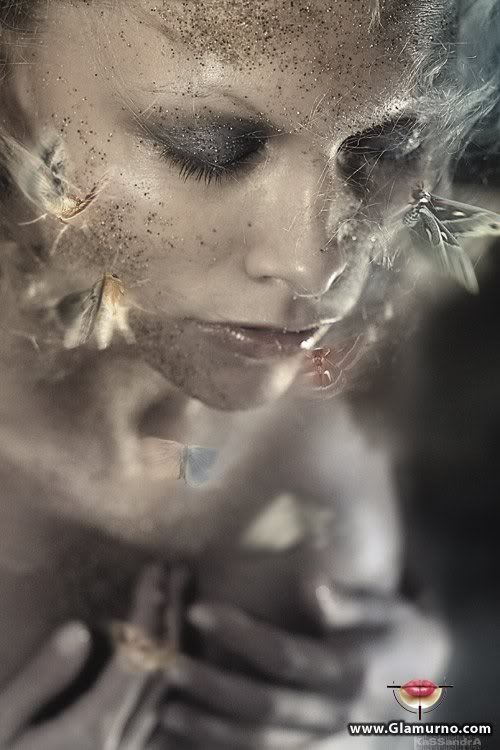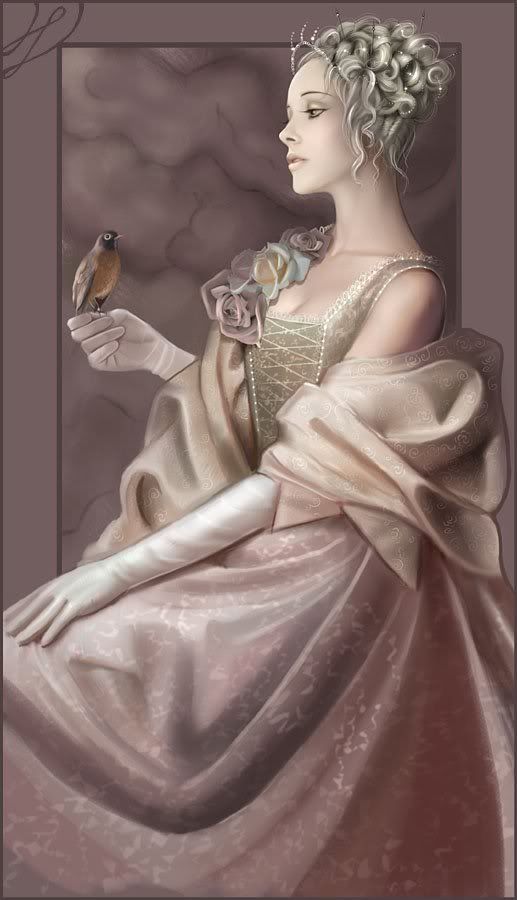Marshall McLuhan, 1984
Nowadays, our lives are inseparable with digital art. With the advancement of technology, our living condition is now better off. Computer and Internet have penetrated into every corner of people’s lives and it can be said as indispensable tools to us. They have changed the way we live, the way we create and the way we look at art. Digital art makes great different from traditional art. People usually regard traditional art as high art but to some extent, they despise on digital art or net art. Maybe due to the efforts paid and hardship overcome to create a traditional art like “The Last Judgment” by Michelangelo and “Sunflower” by Vincent Van Gogh, people tend to value traditional art more. I’m not here to discuss the validity and justifiability on how people look at and compare these two kinds of art. Actually, I will focus on how digital art, a tool created by us, shapes us---on the dimensions of certain extent of disintegration of regionalism and hence leading to global connection. In the following, I will first define digital art and collaborative art and the briefly talk about how digital art is applied to our surrounding environment. My main focus is on the global connection created by it.
With reference to wikipedia, digital art “refers to art created on a computer in digital form. Digital art can be purely computer-generated, such as fractals, or taken from another source, such as a scanned photograph, or an image drawn using vector graphics software using a mouse or graphics tablet. …… it is usually reserved for art that has been non-trivially modified by a computing process (such as a computer program, microcontroller or any electronic system capable of interpreting an input to create an output)”[1] And collaborative art, or say, interactive art, is a piece of art work that is completed, interpreted by more than one person with join forces. There are many forms of collaborative art including Internet art, screenbased interactive works, and interactive sculpture and installation. “This intellectual and artistic trend towards interactivity has flourished in recent decades with the explosion of artists' access to new technology. Developments in software, hardware, and information networks have transformed the range of artistic production and have reshaped the public's daily interaction with images, information, and data. New media art, loosely encompassing digital and analog images and sound technologies, has continued to explore alternatives to the static art object, inventing new modes of viewer participation.”[2] As illustrated in the above quote, collaborative art involves not just artists but also audiences. Digital art is applied to everywhere of our lives including digital cinema, digital photographing, video game, television etc. It is transmitted to us by different mediums.
Internet actually has provided excellent space for online interaction and the searchable data-base collages image, sound and text that revolutionized traditional representation of art. But what make a difference from television, except both internet and television needs monitors, is the ability for internet to share people’s ideas, imaginations, works……from great distance in a participatory dimension.[3] There are exchange of experiences between artist and audience, creator and participant, organism and machine, body and space, as well as self and other.
I really agree that what we are experiencing is not a “computer revolution but rather a communications revolution. The internet is a new kind of dialogue public space.”[4] We communicate to express and formulate our ideas, feelings, imaginations, states of mind, stance, points of views, etc. The convenience and accessibility of internet, to some aspects, make communication easier. “Because of its close connection to the internet, however, from its inception New Media art was a worldwide movement. The internet facilitated the formation of communities without regard for geography. The international nature of the New Media art movement reflected the increasingly global nature of the art world as a whole.”[5] Internet has provided a two way channel for people all over the world to communicate. This is very different from the traditional representation of art that is usually unidirectional. In this case, the artist or the medium presents a work or an idea and then the audience receives and that’s the end of the communication. Yet, collaborative art considers the viewers’ participation as a vital segment to the work of art and it activates viewers as an integral part of the work.[6] When the art work is presented to the audience, they can comment, interact and modify the work then disperse their reactions to the artist or some other people. Communication does not end with the perception of the viewers but there is continuous interflow.
The interaction is clearly reviewed in the Photoshop contest, which is an online game, in which a starting image would be posted on a website or an Internet forum. The image is usually a photograph. The users are asked to manipulate the image by using some kind of graphics editing software, such as Photoshop, CorelDraw, The GIMP, Paint Shop Pro, Paint.NET etc. Contestants are usually required to edit the picture to make it humorous, or suit to a specific theme. They then alter the image and post their resulted work onto the website. After all works are submitted, , people vote on the other user's submissions. Contestant whose image receives the most votes would win.
http://photoshopcontest.com holds online competition for Photoshop contest. It advocates “Creative Contests. Real Prizes. Essential Resource” and let out people’s creativity and talents on editing images. The awards include some software like TwistingPixels ArtStudioPro 2 and Filter Forge Basic.
and Filter Forge Basic.
Let’s look at some works in the competition.
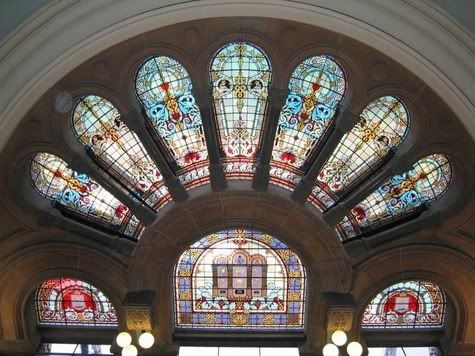 This picture is the original image for editing. The topic is “Holy Glass” and there are many stained glasses in a rose window form. This style can usually be found in the Gothic style churches.
This picture is the original image for editing. The topic is “Holy Glass” and there are many stained glasses in a rose window form. This style can usually be found in the Gothic style churches.
One contestant has made use of the shape of the window and applied it to a Chinese fan, creating a fusion of Oriental and Western styles.
This is another work that makes fun of the Holy God and nuns. The windows become the mirror in a cosmetic box and the nuns are with a ridiculous make up. This is a real creativity.
Here is another online Photoshop contest website
People are regardless of their sex, age, ethic or location etc. The only requirement is their creativity in participation of the contest. Once they have the will, they can join the online community. Online community can enhance cross-pollination of interaction among those internet users.
Photoshop Tennis is a game played by usually two competing players through sequential alternately editing an image. This idea popped up in the late 1990's to early 2000's from some graphics-related internet forums. An art director Jim Coudal made it renowned in 2001 and he describes the game as an "international, cooperative, quasi-competitive, independent thing,"[7] The players select a starting image in each match, then one player makes some alteration to the image then sends that edited image to the other player or players, via some electronic channels like e-mail or by posting the image onto a Photoshop tennis forum. The player who receives the altered image again makes some modification to it and sends it back to the first player. These steps repeat continuously until reaching the predetermined number of rounds, or the players agreed to end the game. The winner is then decided by an independent judge after the game is over. Sometimes there might not be a clear winner as it’s hard to judge. Players can make agreements on extra rules, such as limit on using one particular software program, or sticking to a particular theme.[8]
“There is blurring of boundaries due to “electric shocks” we are experiencing in every field. Such systems are emblems of a “globalized” postmodern world that we experience as very dislocations and disruptions of real people and whole communities.”[9] To illustrate, there was an interactive installation art held by Rafael Lozano-Hemmer in 1999-2002. The project is called Vectorial Elevation, Relational Architecture 4. In the Zócalo square in Mexico City

http://www.alzado.net/eintro.html
The 3 photos were taken on the 7th of January, 2000 , there were a great numbers of visits from 89 countries and all the regions of Mexico Dublin Ireland
Some artists want to create a global culture and have pioneered in telecommunication arts through collaborations. This act at first began between North and South American and European cities, producing interactive telecommunications activity in the arts through videophone technology and long-distance “telematique” transmission of computerized information.[12]
In the 1984 Olympic Arts Festivals, Kit Galloway and Sherrie Rabinowitz developed a project based on the “concept of a new electronic museum, a way to link people, places, and art works in an electronic environment.” This project was commissioned by the Museum of Contemporary Art (MOCA) in
The cafés provide space for people from different cultural backgrounds to gather and communicate and hence leading to a certain extent of cultural homogenization. The original storage imagery and pictorial database contains 20,000 images.
In 1989, the Electronic Café had opened a global-scale multimedia teleconferencing facility in
There is another project called The Mail Art Project. It is a collaborative project between national and international artists. They use postal service to deliver artworks. Artists are encouraged combine different media and collage. This collaborative mail art project allows artists to be more aware of their styles of creation and be sensitive to others' forms of expression. . The backgrounds of the artists are diverse, including printmakers, painters, sculptors, mixed media artists, air brush artists etc. They join together to create works.[14]
In conclusion, digital interactive art helps to create a global connection and eliminate the boundary of geography. People can easily access to various information and databases and communicate with others disregard of the geographical limitation. The flow of ideas can help the progress of art history. The ongoing technological advancement provides the structure and impetus for exploring interactivity as a predominant issue in art today and also in the future.
Bibliography
1. Margot Lovejoy, Digital currents: art in the electronic age, (
2. Dirk Paesmans, Jodi, New Media Art, (Köln ;
3. http://en.wikipedia.org/wiki/Digital_art
4. http://www.artinteractive.org/curatorial.php
5. http://www.alzado.net/eintro.html
6. http://www.ecafe.com/getty/table.html
7. http://www.layertennis.com/
8. http://photoshopcontest.com/
[1] http://en.wikipedia.org/wiki/Digital_art
[2] http://www.artinteractive.org/curatorial.php
[3] Margot Lovejoy, Digital currents: art in the electronic age, (
[4] Margot Lovejoy, Digital currents: art in the electronic age, (
[5] Dirk Paesmans, Jodi, New Media Art, (Köln ;
[6] http://www.artinteractive.org/curatorial.php
[7] http://www.wired.com/culture/lifestyle/news/2001/09/47132
[8] http://en.wikipedia.org/wiki/Photoshop_Tennis
[9] Margot Lovejoy, Digital currents: art in the electronic age, (
[10] Margot Lovejoy, Digital currents: art in the electronic age, (
[11] http://www.alzado.net/eintro.html
[12] Margot Lovejoy, Digital currents: art in the electronic age, (
[13] Margot Lovejoy, Digital currents: art in the electronic age, (
[14] http://www.valweb.org/mailart/mailart.htm
